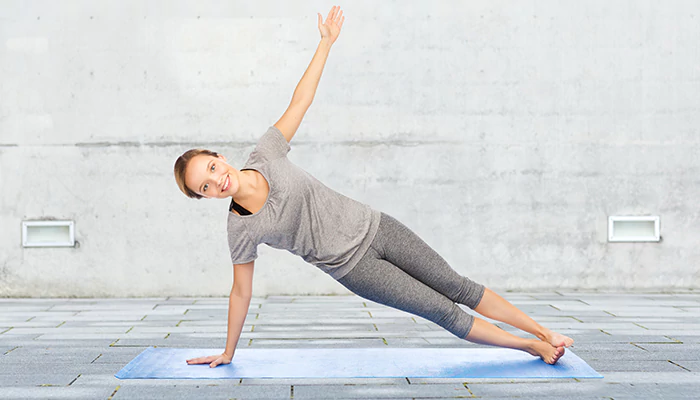Core Strengthening Exercises Without Stress on Your Joints
There are quite a number of very good core development exercises that do not strain your joints and can really help you get the shape you so want while keeping your joints healthy, too.
- Shriparna
- 15 June, 2025
- 2 mins ago

Core Strengthening Exercises Without Stress on Your Joints
There are quite a number of very good core development exercises that do not strain your joints and can really help you get the shape you so want while keeping your joints healthy, too.
Building core strength is part of balance, posture, and keeping the entire body healthy. Yet most of the core exercises like crunches or sit-ups cause discomfort, especially on the neck and the back, or on other joints by putting pressure on them, in individuals who might have an injury or one with some sort of mobility problem.
Variations in Plank
The plank is one of the best low-impact exercises which develops the entire core by strengthening the muscles of the abdomen, the lower back, and the shoulders. Planks can be modified to suit easily without overstraining sensitive parts, thus becoming a great option for individuals training during sessions that are joint-friendly.
Forearm Plank
This modification keeps your body on your forearms and toes rather than on the frontal aspect of the high plank, which may cause stress at the wrists and elbows. It leaves the core work with minimal effect on the wrists.
Side Plank
You take your body sideways up while bracing your body on one forearm at a side plank. That catches your obliques and enhances lateral stability with little strain on the joint.

Modified Plank
for people with lesser mobility, performing modified plank on knees instead of toes will relax the shoulder and lower back but still can stretch out the core muscles.
Pelvic Tilt
This is a simple but very effective exercise to strengthen muscles in the lower abdominal region without putting pressure on the back or the hips. This exercise is also highly recommended for those who experience pain in the lower back region.
How to Do:
Lie on your back with your knees bent and feet flat on the floor.
Press your lower back into the floor by tilting your pelvis upward.
Hold for a few seconds and release.
This movement helps activate the lower core and stabilize the spine.
Bird Dog
Bird dog is a functional exercise that involves engaging with more than just the core: the back, glutes, and shoulders are also worked. It's a great joint-friendly option because when done correctly, it doesn't put much strain on the knees and wrists.
How-to:
Assume a position on your hands and your knees, but keep your back flat like you were sitting at a table.
Extend one arm and the opposite leg forward, balance on that limb.
Hold for some few seconds and return to the top.
Alternate the other side
This exercise conditions the core stability and synchronization without overstretching your spine or even the joints.
Glute Bridge
Although Glute bridge primarily engages the glutes and hamstrings, it also activates the core along with the lower back. In this exercise, lying on your back decreases joint stress and actually makes you feel less discomfort in your lower back.
How to Do
Lie with your back, bending at the knees, and place your feet on the floor, hip-width apart.
Pause, then lift your hips toward the ceiling to create a straight line from shoulder to knee.
Contract the glutes for seconds before lowering back down.
The glute bridge will help activate the posterior chain, while providing protection to the lower backs and knees of those with joint concerns.
Seated Twists (No Dumbbells)
Russian twists are a great exercise that target your obliques, but when done with dumbbells or moving quickly, they put stress on your lower back. The point of this variation is that the exercise can be used without dumbbells to achieve the same results with much less joint stress.
How to Do It:
Sit on the floor with your knees bent and your feet flat on the ground.
Lean back a little and engage your core.
Gradually twist your torso side to side, bumping the floor with your hands if you want.
Since it's a controlled motion with no extra weight, this exercise tones the obliques while protecting the lower back.
Leg Raises
The leg raises are great at hitting the lower abs without tugging on the back or hips, as long as one keeps control over the motion and doesn't arch the lower back to do the raising motion. How to do:
Spread your legs fully and lie on your back.
Slowly lift your legs with your knees straight, and when it reaches more than vertical, make sure it would be perpendicular to the ground
Have the legs oriented back on the floor but without touching the floor through the use of your muscles
This is a focusing exercise for the lower core muscles. Besides, it helps place the spine in an appropriate neutral position so as to avoid back pain.










